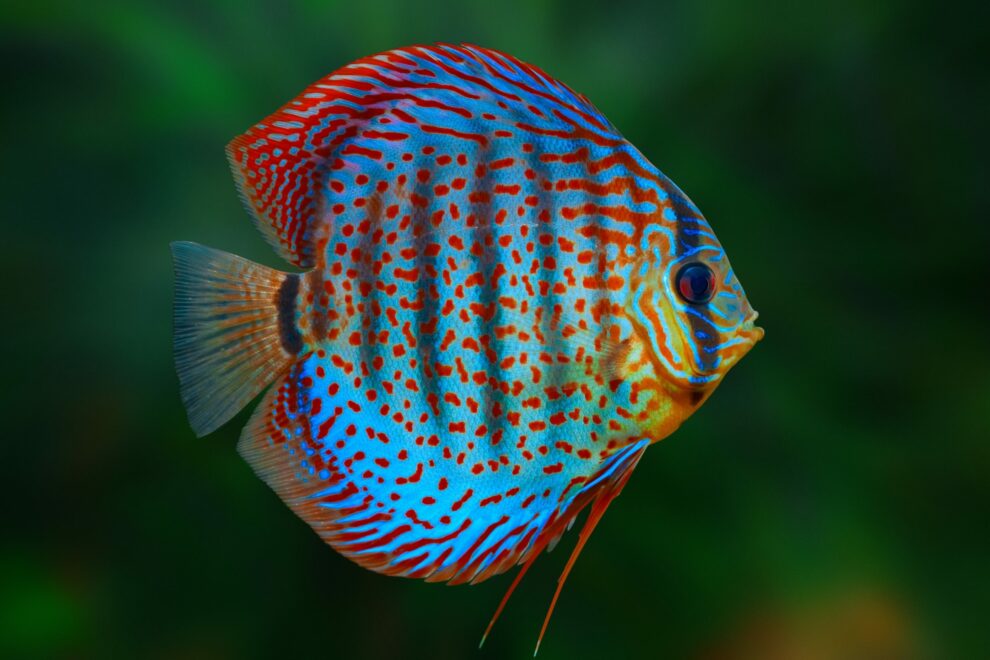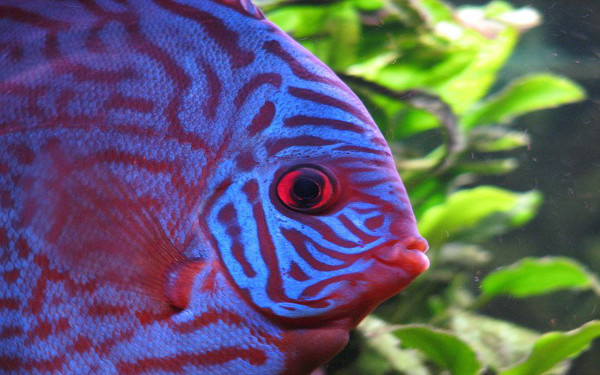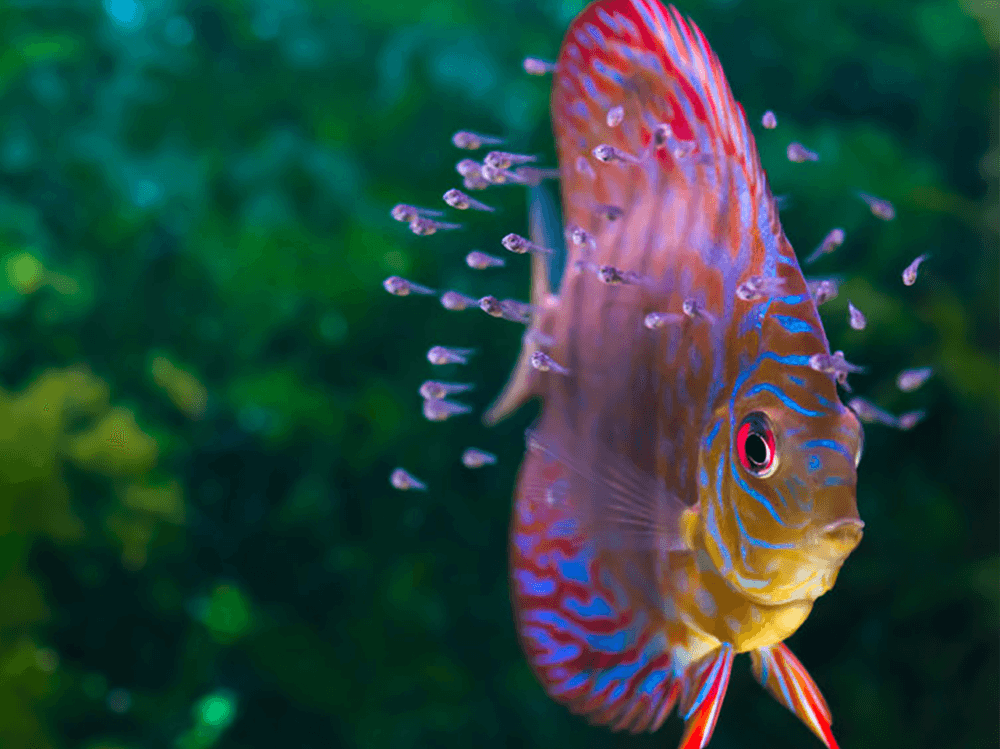How to keep Discus
Discus are highly sought after tropical fish and regarded by many as the kings of the freshwater aquarium. Here's how to keep discus.
Discus fish are cichlids, meaning that they demonstrate brood care and protect their eggs and fry from others. They are pair forming tropical fish but when not in a mated pair they are schooling fish species and feel more comfortable in large groups. Although they are cichlids, they are not tough and aggressive like Convicts or Oscars and instead can be timid and are susceptible to bullying and may be outcompeted at feeding times.
Can you keep Discus in a community tank?
Stressed Discus show dark vertical bars, and can turn off their bright colours and turn very dark and unhappy looking. Although they are community fish and safe with small fish, in a community tank, keeping Discus only works if the conditions the Discus need are met first and foremost.

Discus tank size
Adult Discus can attain the size of a saucer and because of their body height, shoaling needs, and appetites they need large tanks, ideally four feet long and two feet high for a group. Keep them in groups of five or more, and ideally ten or more in order to lessen pecking order and quarrelling amongst themselves. A mated pair can be kept in a smaller tank and breeders often keep pairs in 18” cube tanks.
Water parameters for Discus
Wild discus come from very warm, very soft and acidic waters in the Amazon. In the aquarium, wild Discus are difficult to keep and tolerate nothing else, and although captive bred discus from Germany can tolerate harder water with a higher pH, all Discus need warm temperatures of 28C. If your Discus come from breeders in the Far East, they will need soft acidic water and a high water temperature too. Use RO water (reverse osmosis,) instead of tap water to provide high-quality soft water every time, and remineralize it to provide electrolytes and help prevent pH crash.
Discus water quality
Discus aquariums should be well filtered with large biological filters, but they don’t appreciate strong water flow so deflect filter outlets onto the tank glass. Tanks must be mature for Discus and ideally set up for and matured for six weeks before adding them. Discus need frequent feeding so the filtration system must be able to cope with their waste and convert it as ammonia and nitrite must be at zero at all times.

Discus tank decor
The natural discus habitat is tannin-stained and contains lots of wood and leaves over a bed of fine sand. This can be replicated in the Discus aquarium although tank-bred Discus have been raised in bare-bottomed tanks and aren’t fussy as to their decor. Live plants or artificial can be used, though give yourself a clear area of substrate at the front where you can drop their food and vacuum out their waste. Breeding Discus spawn on Vertical surfaces so provide vertical decor to facilitate this or a specially made Discus cone.
Tankmates for Discus
Discus tank mates must also prefer soft acidic, very warm water, but at the same time must not be boisterous or aggressive. Cardinal tetras are popular, as are Ram dwarf cichlids. Catfish can be included as long as they are warm water tolerant and don’t grow larger than the discus. Large, night-active catfish can spook them. Angelfish come from the same waters as Discus in nature but some keepers leave them out of the Discus aquarium as they can outcompete them at feeding time. Alternatively, Discus can be kept on their own as the only species in the tank.
Discus diet
Discus have tiny mouths for such large fish and that gives us clues as to how and what they eat. They must eat little and often and need high protein foods to maintain weight and their high metabolisms. Bloodworms are taken although these are low in nutrition, and it’s much better to get them onto Discus specific dry foods. They can be fed up to six times per day as long as the filtration is up to it and water is changed very regularly.

How to sex Discus
Sexing Discus isn’t easy and even professionals get it wrong. Long, trailing ventral fins are not an indication of a male (females can develop them too,) although the most aggressive fish in a group will always tend to be male. Keep a group of fish and let them sex and pair each other off. When they start to lays eggs you will see the difference in shape between the males and female vents.
Although Discus often spawn, it’s raising them past the fry stage that can be difficult. Move a breeding pair to a separate tank with a simple sponge filter powered by an air pump, and a spawning cone, and expect many failures before they get it right.
Can you keep Discus in a planted aquarium?
You can keep Discus in planted tanks, but the plants need to be warm water and soft water tolerant. Discus are messy fish so need a clear area free of aquarium plants in which to feed. They also need high oxygen levels so ensure carbon dioxide is turned off and the planted tank is well aerated at night.









